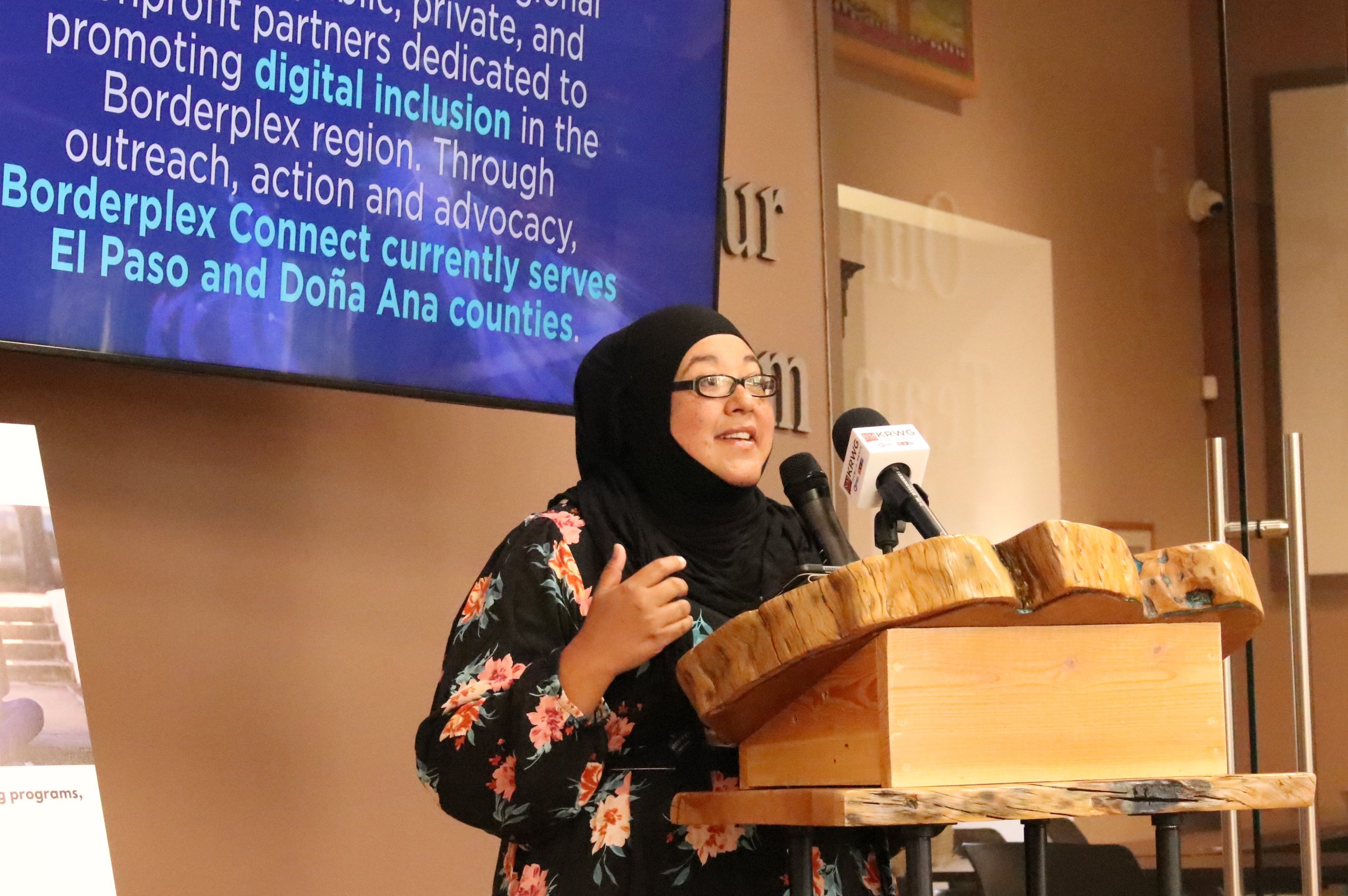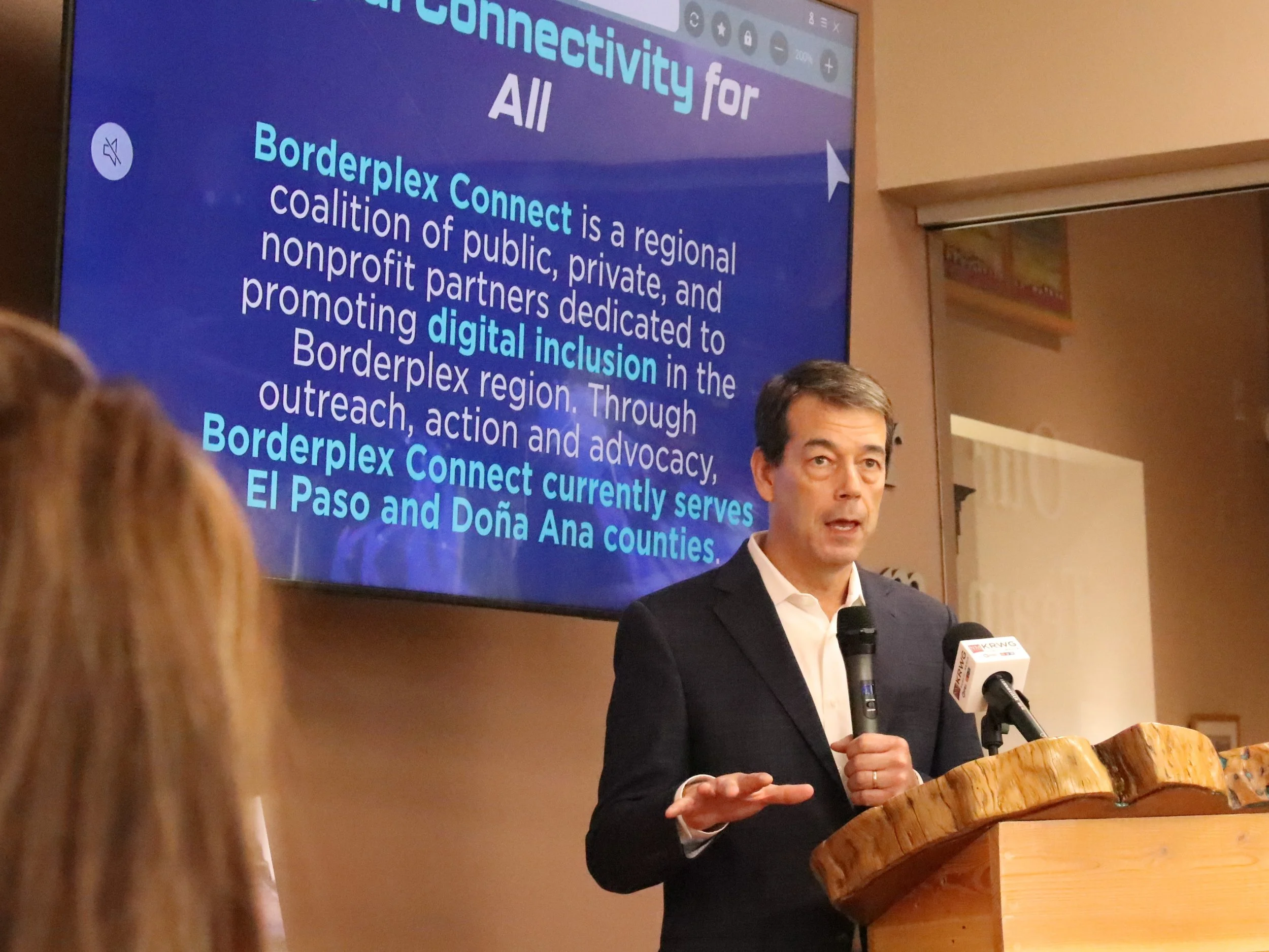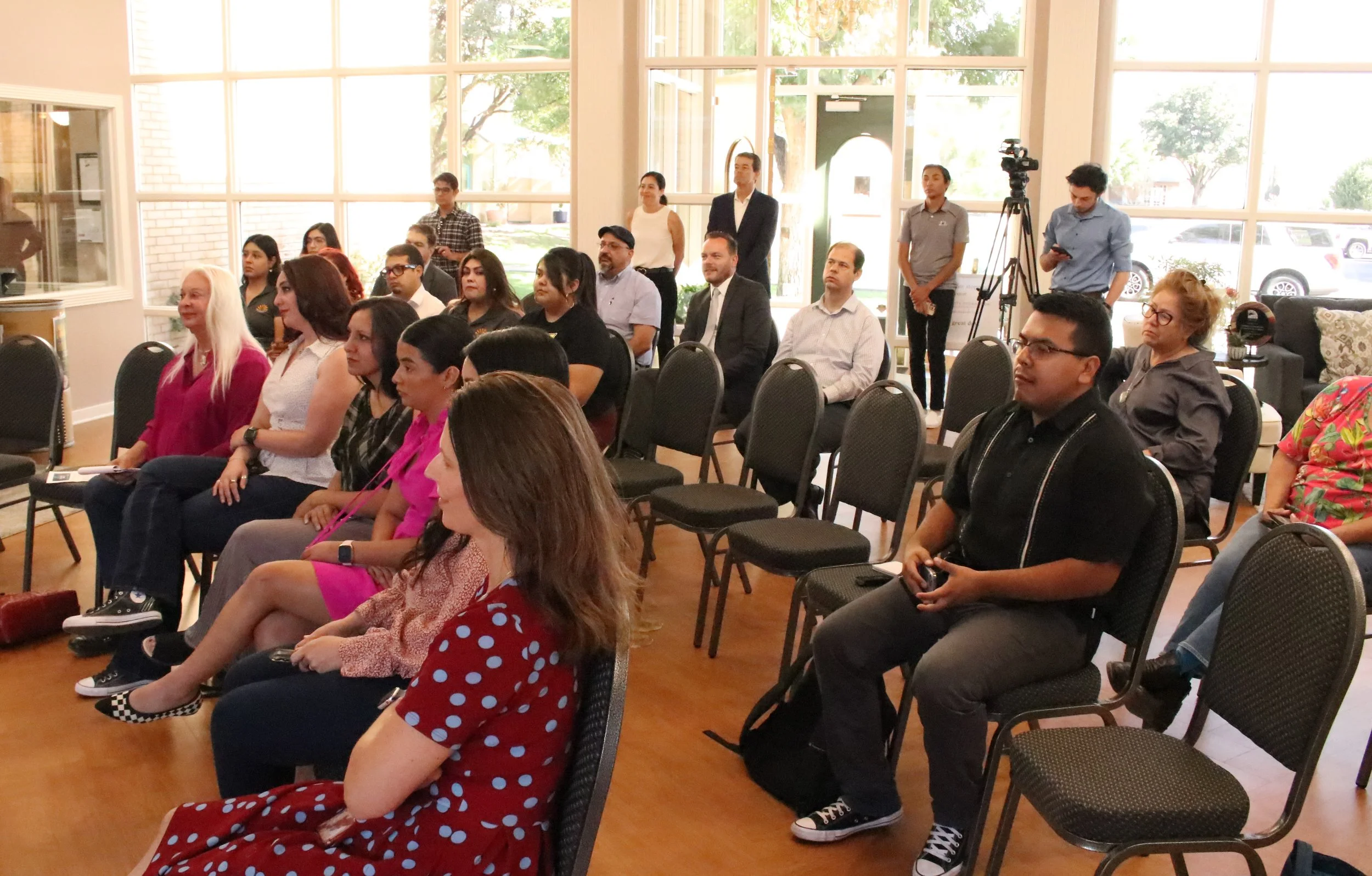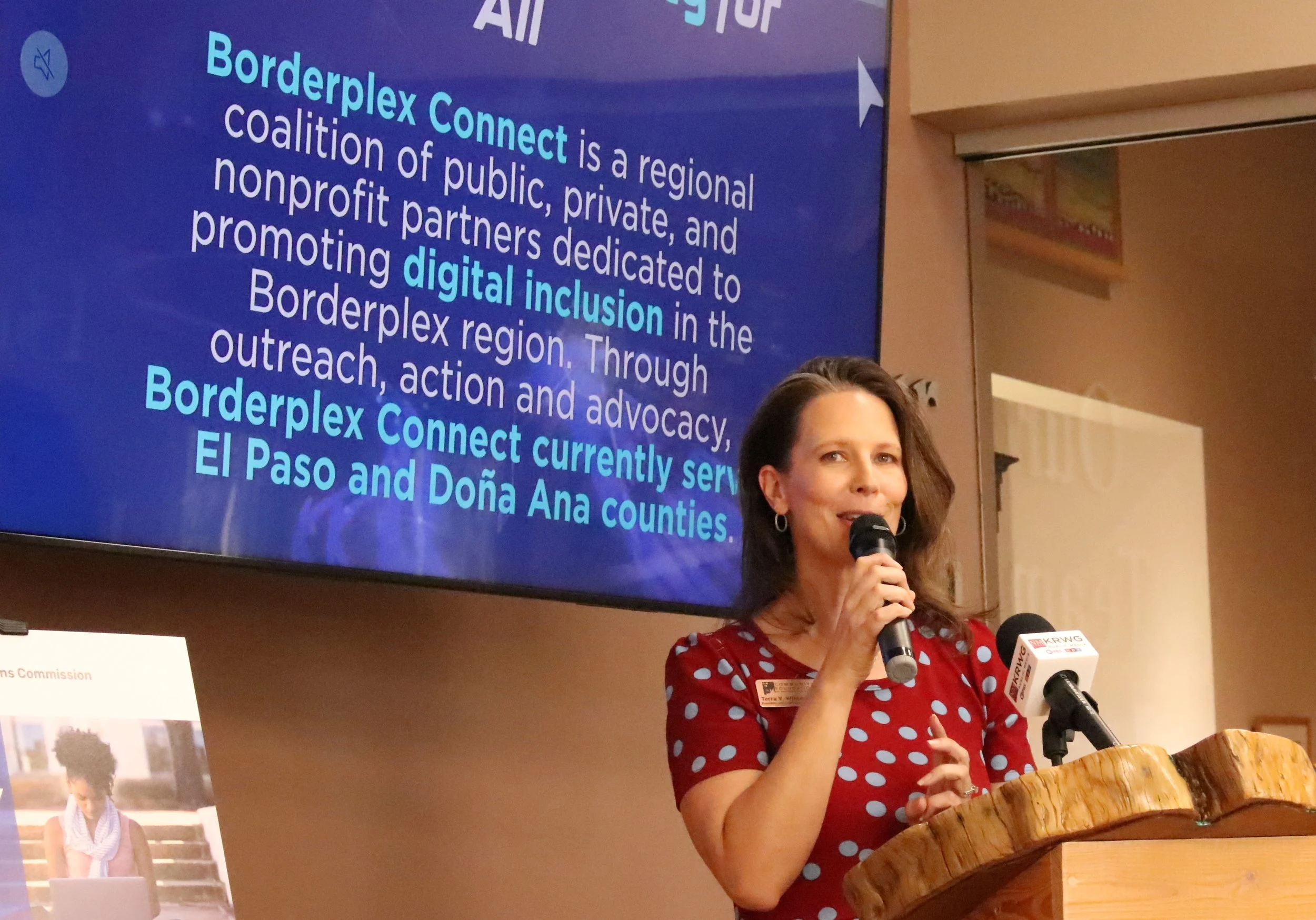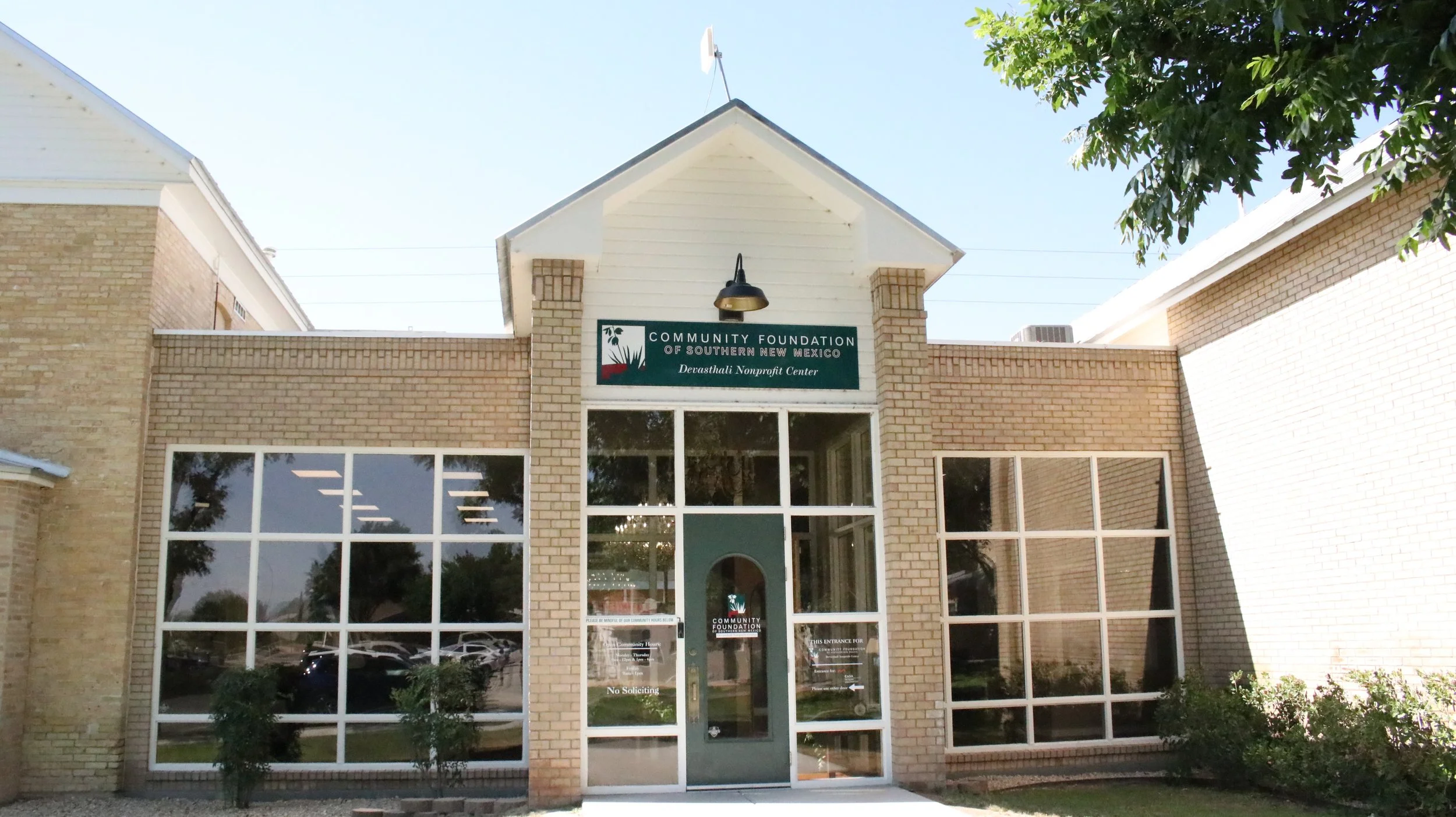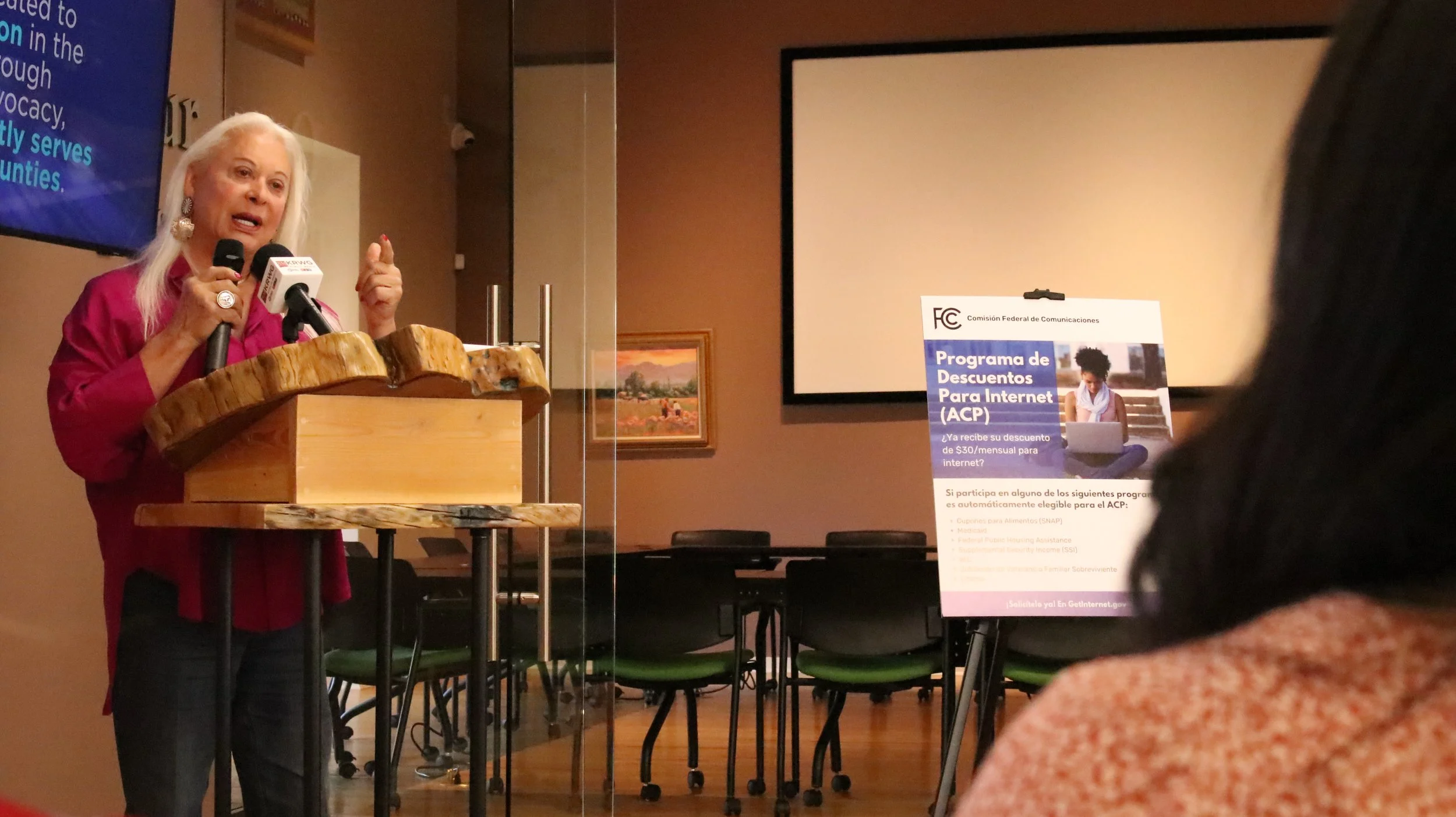$300K award to jumpstart internet-aid outreach in Doña Ana, Luna Counties
FCC award will help advocates enroll residents in $30 per-month subsidy
Daisy Maldonado, executive director of Empowerment Congress, tells attendees at a news conference Thursday, July 6, 2023, that internet access is a significant need in the 37 communities known as colonias in Doña Ana County. Maldonado is part of a broadband coalition known as Borderplex Connect that will receive a $300,000 grant from the Federal Communications Commission to boost enrollment in a federal internet subsidy for low-income homes called the Affordable Connectivity Program. (Photo by: SNMJC/ Diana Alba Soular)
LAS CRUCES – A federal program launched during the pandemic helps low-income families pay their monthly internet cost – sometimes covering the whole bill. But many people across Southern New Mexico are unaware of the program or have had problems signing up.
Thursday, July 6, local internet access advocates formally announced a $300,000 funding award for boosting awareness about and helping people sign up for the home internet subsidy, known as the Affordable Connectivity Program. The ACP pays families up to $30 per month (or $75 for tribal members) for internet.
Advocates say the new funding will help residents in rural, mostly Hispanic border communities known as colonias, as well as some people in cities like Las Cruces who are negatively affected by a national digital divide. Daisy Maldonado, executive director of Empowerment Congress, noted there are 37 colonias in Doña Ana County in need of access or better access. Broadband is “a vital public infrastructure that’s needed for daily living,” she said.
“This didn’t just get highlighted during the COVID-19 pandemic and stay-at-home orders here in New Mexico, but it was exponentially highlighted,” she said during a news conference at the Community Foundation of Southern New Mexico’s headquarters in Las Cruces. “Children had to now do school from home. Parents had to work from home, and that was almost impossible because, again, they didn’t have broadband internet.”
Eric Pearson, president and CEO of the El Paso Community Foundation, tells attendees at a news conference on Thursday, July 6, 2023, in Las Cruces that internet access in the region is much less than what federal numbers state. EPCF will administer a new internet-access grant in cooperation with local broadband advocates. (Photo: Diana Alba Soular/ SNMJC)
Access remains a challenge
Indeed, many families in rural and semi-rural areas of Southern New Mexico have few – if any -- options to connect to high-speed internet. Just 10 miles south of Las Cruces, residents of Mesquite struggle to work from home or do schoolwork, due to lack of availability of high-speed services. In more urban settings, better infrastructure exists, but many times families can’t afford subscriptions.
The newly announced Federal Communications Commission money will go to a group called Borderplex Connect, high-speed internet access advocates working in far West Texas and Southern New Mexico. Such groups are expected to play crucial roles in identifying needs, securing grants, and making headway toward solving connectivity gaps across the nation. Borderplex Connect is organized under the El Paso Community Foundation, which will administer the new grant in cooperation with the coalition.
Eric Pearson, president and CEO of the El Paso Community Foundation, said the coalition has found that the percentage of residents without adequate internet access is much greater than what is recorded in FCC data.
“When we talk about broadband access and devices and the ability to use those devices – we know that’s an important part of what it means to be part of the community to access health care, to access education, access the banking system, to be put on the rolls of the community,” he said at the news conference.
The new funding will specifically go to work in Doña Ana and Luna Counties to raise awareness about the Affordable Connectivity Program and directly help people enroll in it. The Southern New Mexico Journalism Collaborative has previously reported that residents face a variety of barriers to signing up – ranging from lack of awareness about the subsidy to language barriers to logistical hurdles. Compared to other U.S. states, New Mexico has shown stronger enrollment in the subsidy. Even so, more than half of eligible households are still not participating.
Attendees gather Thursday, July 6, 2023, at the Community Foundation of Southern New Mexico in Las Cruces to hear about a $300,000 grant to boost internet access in Luna and Doña Ana Counties. (Photo: Diana Alba Soular/ SNMJC)
Boosting ‘boots on the ground’
Terra Winter, president and CEO of the Community Foundation of Southern New Mexico, said the funding will also help support broadband coalition meetings in communities and hiring more personnel, such as through Empowerment Congress, to help residents sign up for the subsidy.
“It will employ further people in those programs because they already have boots on the ground,” said Winter, who sits on the coalition board. “So, it’s a way to try to increase their capacity.”
Recently, a pool of $675 million dollars was announced by the federal government to boost high-speed internet infrastructure in New Mexico. Another pool of funding is expected to be awarded for digital equity – helping people get devices and internet service, as well as learn the skills needed to put broadband to use in their lives.
Winter said she’s optimistic the $300,000 will allow broadband advocates to show “proof of concept” in helping residents connect to the internet, and that could open the door to further funding for Borderplex Connect and for smaller nonprofits like Empowerment Congress.
Christie Ann Harvey, executive director of the nonprofit Greater Luna County Economic Opportunity Council, said about 8,500 residents living in the unincorporated areas of Luna County are in “desperate need” of broadband access.
“These people cannot get educational opportunities,” she said. “They can’t work from home. Health care is limiting to them. They’re very deprived in their ability to create a living. Our poverty rate in Luna County is about twice the national average.”
In 2020, about 24% of Luna County residents were in poverty, compared to about 11% nationwide, according to U.S. Census Bureau numbers.
Representatives from the Federal Reserve Bank of Dallas, whose jurisdiction includes Southern New Mexico, have helped local broadband advocates identify grant opportunities.
Terra Winter, president and CEO of the Community Foundation of Southern New Mexico, on Thursday, July 6, 2023, helps to announce a new funding award to boost broadband access in Luna and Doña Ana Counties. The announcement was made at the CFSNM headquarters, 2640 El Paseo Road, Las Cruces. (Photo: Diana Alba Soular/ SNMJC)
Seeking permanent change
A Doña Ana County broadband coalition that was a basis for Borderplex Connect carried out an internet access survey among 5,000 residents in 2020 with the help of Empowerment Congress’ community health workers known as promotoras. The study identified significant needs among residents. Among respondents without internet, 75% identified as Hispanic, and the majority reported a household income under $21,000, according to BorderplexConnect.org.
“What they heard at the doors varied,” Maldonado said. “People said: ‘I can’t afford it, even if I wanted it.’ Some people said: ‘If I did have it, I wouldn’t know where to start.’ Some people said: ‘Well, there isn’t a service near me where I can get internet service at all.’”
Most internet services are provided by private companies, and the cost of subscriptions can be a hurdle to residents.
Winter said the recent funding award also allows “us to make tougher conversations happen.”
“In Luna County, they’ve talked about owning a utility,” she said. “We’ve talked about that with Borderplex Connect because of the cost of private companies. So, it’s allowing us to have those equity conversations, if it is a private company coming in.”
The announcement of a new $300,000 grant to boost internet access for residents of Luna and Doña Ana Counties took place Thursday, July 6, 2023 at Community Foundation of Southern New Mexico, 2640 El Paseo Road, Las Cruces. (Photo: Diana Alba Soular/ SNMJC)
Borderplex Connect is applying for a different pool of funding for similar work in El Paso County, Winter said.
Pearson said the recent grant is the “very, very tip of the iceberg.”
“This grant will help us bridge over to what will have to be permanent change for our community,” he said.
Maldonado said the long-term goal is to not provide a “temporary Band-Aid” for broadband in communities but to create permanent, equitable high-speed access.
To sign up for the Affordable Connectivity Program, visit https://getinternet.gov/apply.
Empowerment Congress mentioned in this article is a participant in the SNMJC.
Correction: The date of this news conference has been corrected from an initial publication.
Christie Ann Harvey, executive director of the nonprofit Greater Luna County Economic Opportunity Council, addresses attendees at a news conference Thursday, July 6, 2023, in Las Cruces, saying residents of Luna County face high poverty rates, but their economic and educational opportunities are limited because of poor internet availability. Harvey was among a group of local broadband advocates announcing a new funding award to help residents enroll in a federal internet subsidy. (Photo: Diana Alba Soular/ SNMJC)


